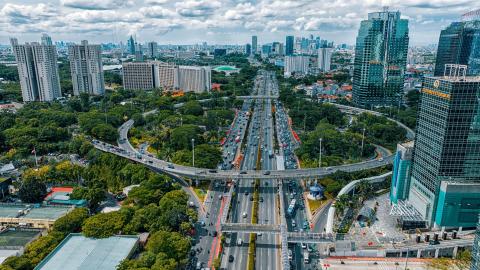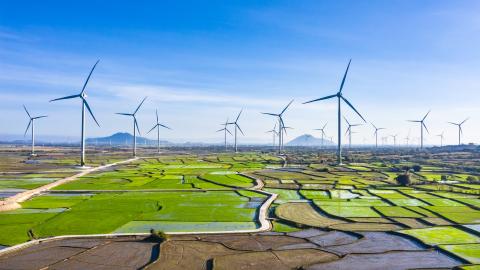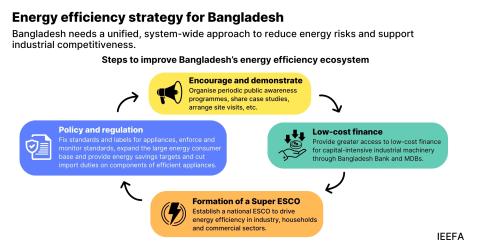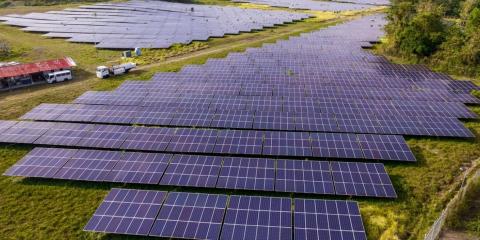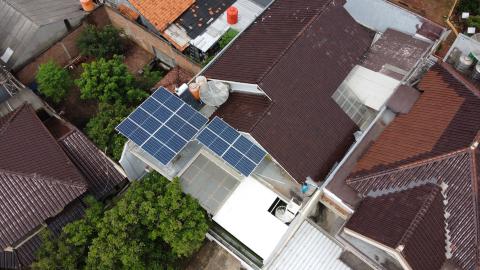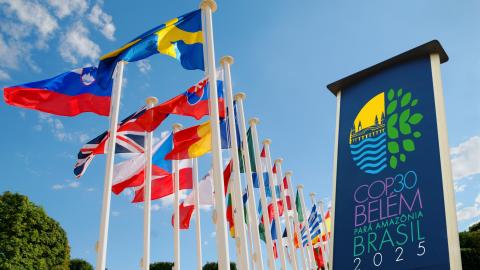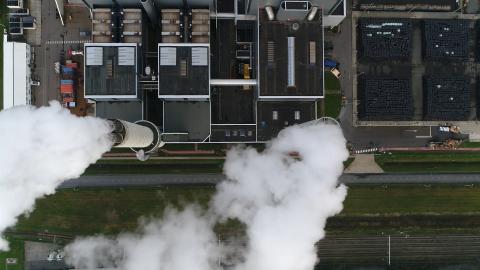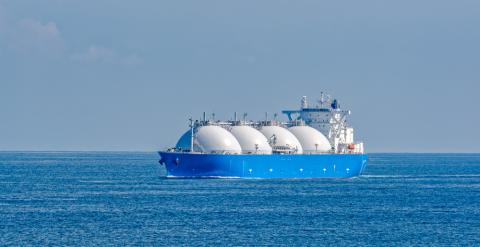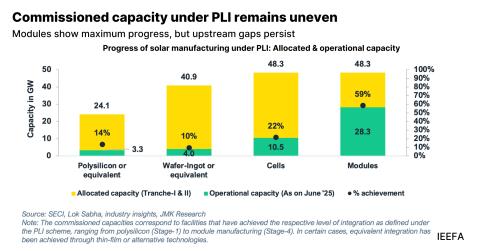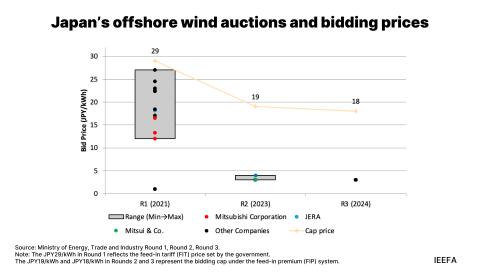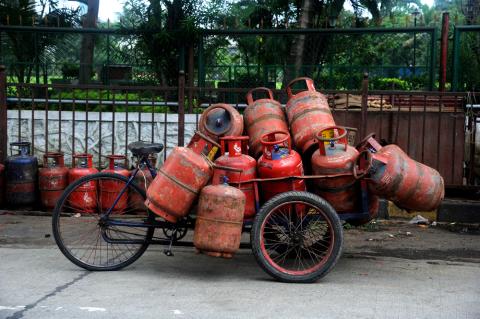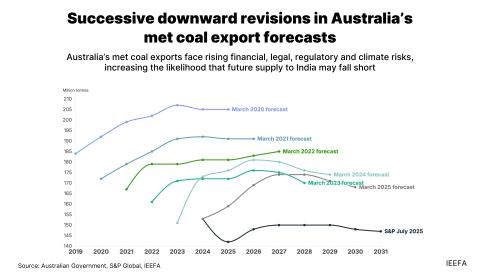India’s Renewable Energy Drive: Progress, Bottlenecks, and Strategic Imperatives
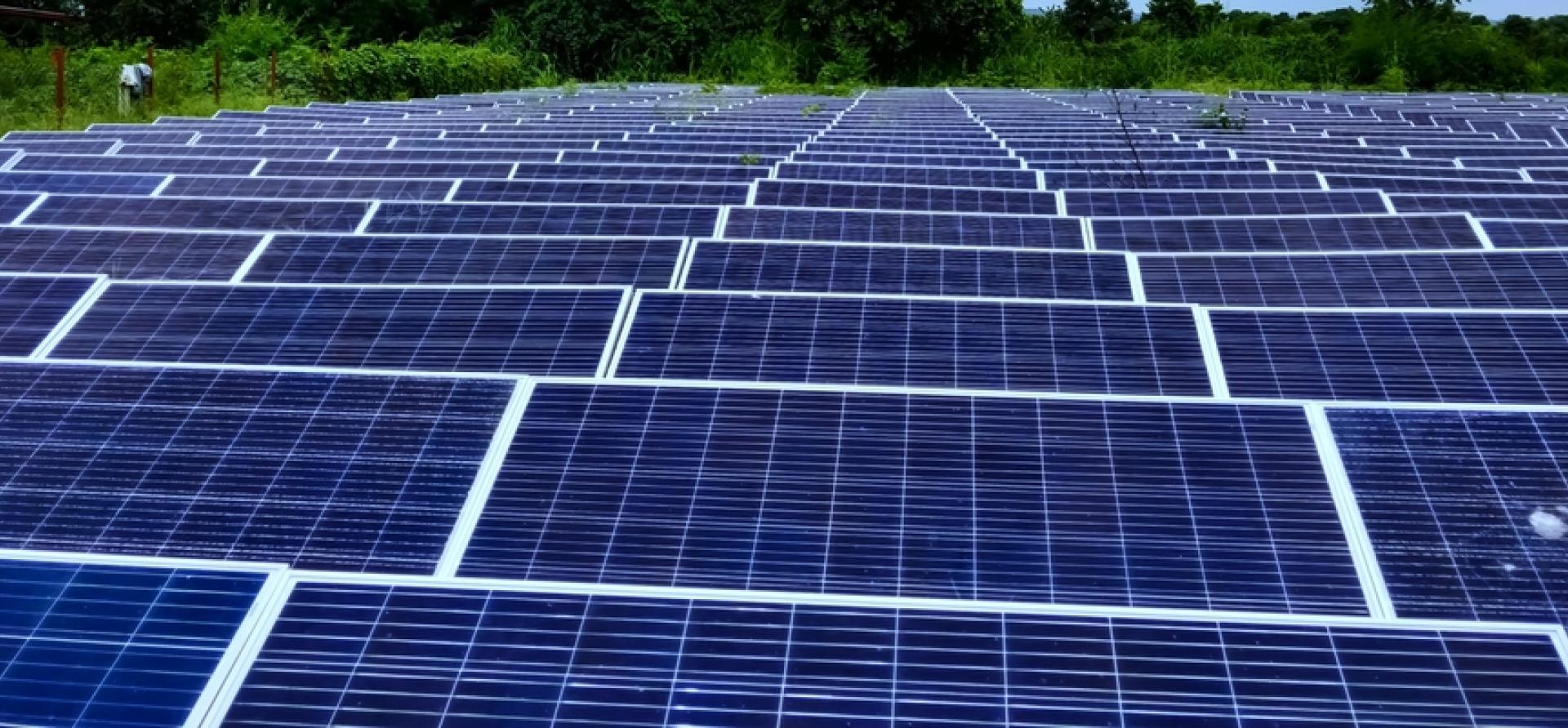
Key Findings
The rise of hybrid auctions, which combine wind and solar energy, accounted for over half of the auction volumes of 59 gigawatts (GW) in 2024, showcasing the market’s move towards innovative energy solutions to enhance grid stability.
Despite robust auction activity, actual installations lagged, with only a 16% year-on-year increase in installed capacity to 209GW by December 2024. For India to meet its 2030 target of 500GW of electricity generation capacity from non-fossil fuel sources, the growth has to be faster. To facilitate effective project execution, it is essential for policymakers to prioritise clearing obstacles such as the right of way during the expansion of transmission lines, thereby ensuring that planned capacity can be realised.
In spite of improved access to capital, persistent policy-related challenges remain, particularly regarding projects that are bid out/auctioned directly by state electricity distribution companies. Addressing these issues is essential to enhance the investment attractiveness of all project types in India.
Currently, over 40GW of renewable capacity remains stalled due to unsigned Power Sale Agreements. It is imperative to establish annual targets for signing these agreements to ensure alignment between project planning and execution.
India is making bold strides in its renewable energy drive, a crucial element to meet its rising power demand and align with its energy transition goals. The country’s clean power auctions reached a record 59 gigawatts (GW) in the calendar year 2024, a remarkable 2.3 times growth from the previous year, with 16GW auctioned in the quarter ending December 2024 alone. The vigorous auction activity aligns with the government’s goal of annually auctioning at least 50GW of capacity and signals strong intent.
Signs that the Indian renewable energy market is maturing and focussing on grid stability are evident in the rising share of customised solutions like hybrid and firm dispatchable renewable energy (FDRE) projects. Hybrid auctions, combining wind and solar, accounted for over half of the complex auction volumes last year. Additionally, the growing number of green open-access consumers and the increasing renewable capacity being tied up through open-access routes further signal a shift towards more flexible, consumer-driven models of power procurement. Open access installations hit record levels in FY2023 and FY2024, with cumulative capacity reaching 18.7GW by the end of FY2024 and the commercial and industrial (C&I) segment’s annual installed capacity growing by 90.4% year-on-year, underscoring the sector’s rising appetite for clean energy solutions.
However, renewable project execution is not keeping pace with the impressive pipeline and robust auction activity as actual installations and commissioning remain sluggish. The installed renewable energy capacity at the end of December 2024 stood at 209GW, reflecting a mere 16% increase year-on-year. While the installed capacity growth was commendable, to remain on trajectory for meeting India’s 2030 target of 500GW of installed capacity from non-fossil fuel sources, the growth has to be faster. To address this sluggish pace of project execution, policymakers need to work on a few key bottlenecks.
Maintain Momentum in Transmission Sector Growth and Focus on Project Implementation
Firstly, on the transmission side, several renewable energy projects have traditionally not been able to be installed even after commissioning due to a lack of transmission infrastructure to evacuate the generated power. Often, transmission capacity installation follows renewable energy auctioning, and given the longer construction time of the former, the renewable energy capacity installation suffers.
However, today, the transmission sector appears to be catching up swiftly to keep pace with the rising influx of renewable energy projects. Transmission project auctions till December 2024 more than doubled from the previous year, clocking an impressive US$12.6 billion. According to the National Electricity Plan (NEP), India aims to add interstate transmission capacity worth Rs6.6 trillion (approximately US$76.9 billion) and intrastate capacity worth Rs2.5 trillion (approximately US$29.1 billion) between 2022 and 2032. Clearly, there is strong momentum in building the backbone infrastructure required to evacuate and distribute renewable power across the country.
One key aspect to ensure that this auctioned capacity translates to on-ground commissioning is ensuring that issues such as a right of way (RoW) during the expansion of transmission lines are cleared on priority. Additionally, the envisaged transmission capacity growth planned under the NEP needs to be realised to ensure transmission is not a bottleneck in renewable capacity growth.
Ensure Access to Capital is Accompanied by Policy Derisking of Projects
Historically, financing has also been cited as an issue towards the growth of the renewable energy sector. However, key policy tailwinds, such as long-term power purchase agreements, must-run status and transmission waivers, have helped mobilise private capital at scale for the sector.
For instance, Tata Power recently secured US$4.25 billion in financing from the Asian Development Bank. Power Grid Corporation of India Limited (PGCIL) received a US$200 million green loan from Sumitomo Mitsui Banking Corporation. Meanwhile, the Power Finance Corporation (PFC) signed a ¥120 billion (approximately Rs65 billion) green financing deal with the Japan Bank for International Cooperation. In another significant development, Indigrid has partnered with British International Investment and Norfund to establish EnerGrid, a Rs26 billion (US$300 million) infrastructure platform focused on greenfield transmission and battery energy storage projects. These examples highlight the growing investor confidence and the availability of capital for clean energy expansion in India. Investment in the renewable energy sector during the quarter ending December 2024 totalled over US$4.66 billion, marking a 91.5% year-on-year increase.
However, policy-related bottlenecks remain, especially for financing projects that are bid out/ auctioned by state electricity distribution companies (DISCOMs) with persistent issues like offtaker risks and renegotiating Power Purchase Agreements (PPAs). While access to capital may not be an issue, policy-related bottlenecks need to be fixed to ensure investment attractiveness for all kinds of projects in the country.
Focus on Converting Auctioned Capacity to Power Sale Agreements
While transmission- and financing-related bottlenecks are being resolved, another key lingering issue is the rising delays in signing Power Sale Agreements (PSAs). Currently, more than 40GW worth of renewable energy capacity is in limbo due to unsigned PSAs with power offtakers. This issue poses a serious risk to India’s renewable energy goals for 2030 and threatens to erode investor confidence unless addressed proactively. An effective strategy could be setting annual targets not just for capacity auctions but also for allotment and PSA signing. This would compel Renewable Energy Implementing Agencies (REIAs) to align bidding activity with confirmed offtake arrangements, ensuring that projects move from planning to execution faster.
While India’s renewable energy journey has strong momentum in auction activity, rising transmission capacity and robust financing, the government and stakeholders must now turn their focus to bridging the gap between intent and implementation and ensuring the momentum in the implementation of transmission projects and derisking project financing through policy levers is maintained.



